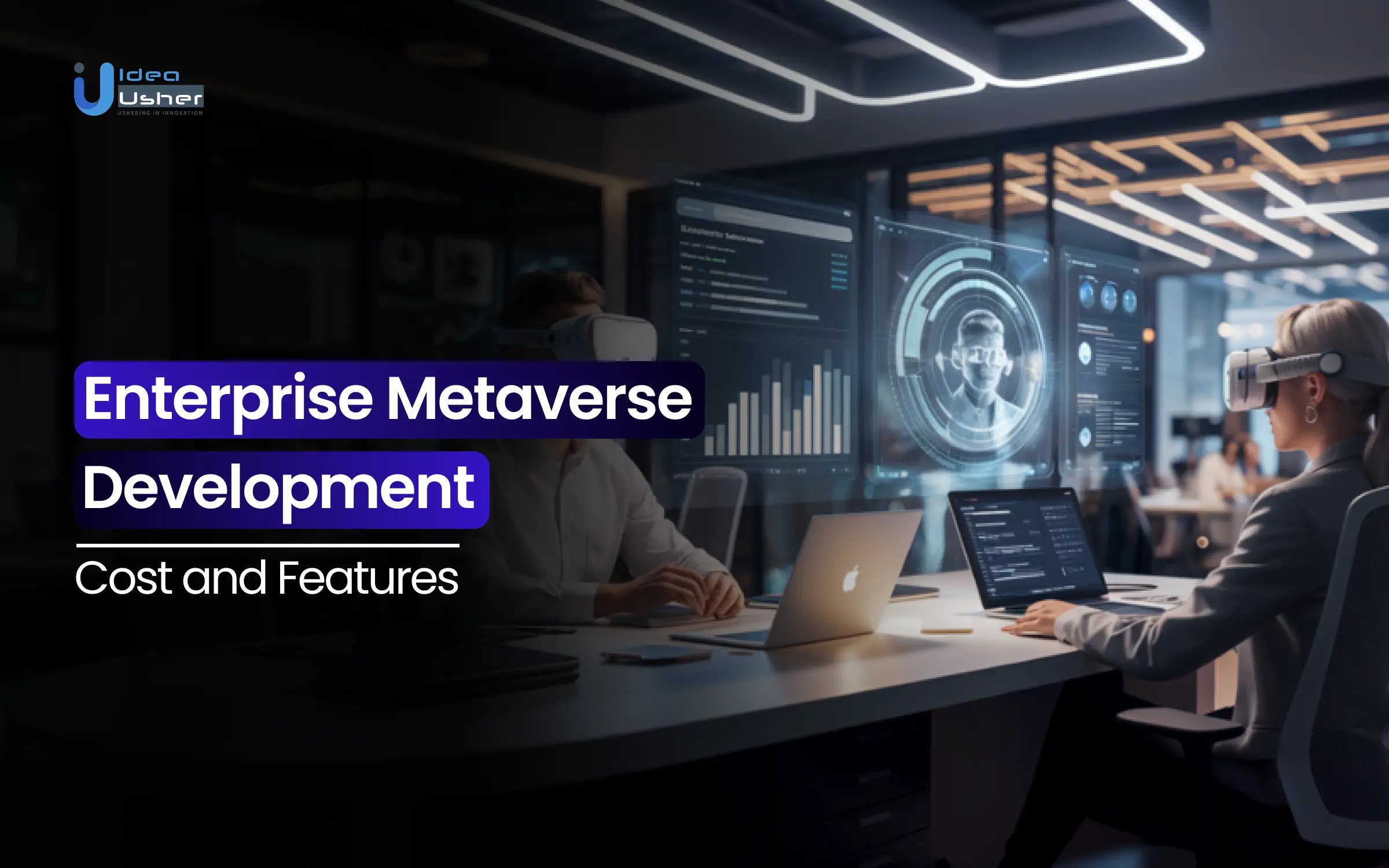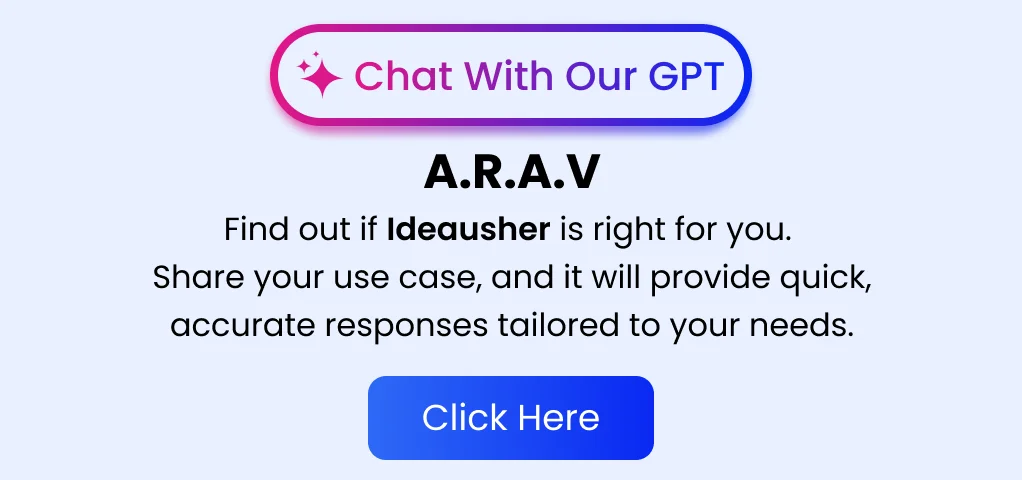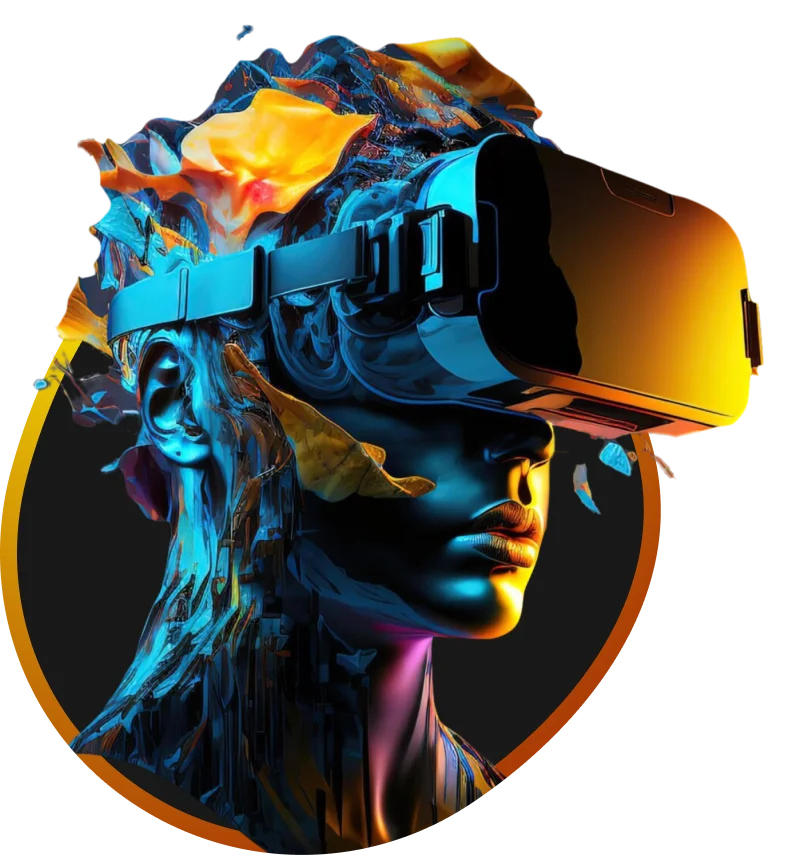The idea of the metaverse isn’t just about virtual worlds for gaming anymore. It’s quickly becoming a powerful tool for businesses across industries. In fact, Statista predicts that the global metaverse market will hit nearly $800 billion by 2024. As more companies look to digital innovation, the enterprise metaverse has emerged as a game-changer for improving everything from internal collaboration to customer engagement.
For example, Nike has embraced the metaverse with virtual stores, allowing customers to shop for digital sneakers and apparel, while Accenture has set up a virtual campus to help their teams collaborate and train in immersive 3D environments.
For businesses looking to explore the metaverse, it’s more achievable than it seems. By combining VR, AR, AI, and blockchain, companies can create digital spaces that mirror their real-world operations. These virtual environments can improve employee training, foster collaboration, and open new revenue opportunities.
In this blog, we’ll guide you through the process of building your own enterprise metaverse, from identifying your needs to choosing the right technologies. If you’re ready to explore how the metaverse can boost your business, you’re in the right place!
Key Market Takeaways for Enterprise Metaverse
Source: MarketUS
The hardware segment, including VR and AR headsets, haptic devices, and sensors, is expected to lead this growth. While desktop platforms dominate in 2022, mobile use is forecasted to grow rapidly.
Several key factors are driving the expansion of the enterprise metaverse. Many companies across different industries are investing in metaverse-based projects, with major players like Microsoft and NVIDIA creating the software and hardware needed to power the metaverse. The growing demand for digital assets, like virtual real estate, NFTs, and cryptocurrency transactions, is also a big driver of this growth.
Industries like gaming, content creation, and social media are further fueling the market, with gaming leading in revenue. Businesses are increasingly using the enterprise metaverse to improve operations and customer engagement. For example, BMW uses AR in its Pilot Plant to help engineers visualize and adjust 3D vehicle parts in real time, speeding up the design process by as much as 12 months.
In retail, Forever21 teamed up with Roblox to create a virtual shopping experience, allowing users to shop for their avatars in a gaming environment. Even real estate is getting in on the action, with companies offering virtual property tours, making it easier for potential buyers to explore homes and commercial spaces from anywhere in the world.
Work with Ex-MAANG developers to build next-gen apps schedule your consultation now
Perfect Time to Invest in Enterprise Metaverse Development
The rise of the metaverse is opening up exciting business opportunities for companies ready to dive in. By creating their own enterprise metaverse, businesses can tap into new ways to make money, connect with customers, and improve their operations. For example, virtual environments can be used for things like training, team collaboration, and remote work, helping companies save money on travel and office space. Plus, by offering interactive, immersive experiences, brands can engage with customers in a more personal and exciting way, all while using data to fine-tune their marketing and outreach strategies.
Companies like Nike and Walmart are already making the most of the metaverse. Nike’s Nikeland on Roblox lets customers experience virtual games and activities, while exploring the brand’s products in fun new ways. In fact, Nike’s digital sales, including from their metaverse ventures, hit around $2.3 billion in 2022.
Similarly, Walmart is making waves by launching virtual stores and developing training programs for employees in the metaverse, allowing them to reach a wider audience and improve their business operations.
Walmart’s total revenue for 2023 reached $611 billion, with its metaverse strategy playing a part in their digital growth.
Beyond customer engagement, enterprise metaverse development is also a great way for businesses to get creative, whether it’s testing new products, improving processes, or collaborating in real time. The metaverse offers a space to innovate faster and smarter, positioning companies to stay ahead in the digital economy.
Important Use Cases of Enterprise Metaverse
The enterprise metaverse presents exciting opportunities for businesses to transform operations, enhance engagement, and boost revenue.
A 2024 Gartner study indicates that 79% of executives plan to incorporate metaverse technologies into their operations by 2026. Companies are already exploring technologies like extended reality, digital twins, AI, and blockchain.
Here’s a look at key areas where businesses are advancing:
1. Engineering and Product Innovation
Digital twins are transforming engineering and development by improving risk management, product design, and predictive maintenance. These digital replicas of physical objects help companies streamline product testing, enhance innovation, and monitor equipment remotely. With XR, engineers can engage with customers, share product demos, and create realistic product visuals, accelerating development and enabling decentralized production.
2. Digital Marketing and Sales Enhancement
Businesses can leverage virtual worlds for marketing events that give customers a chance to interact with products before making a purchase. In the metaverse, sales representatives can meet customers using lifelike avatars powered by AI. Companies like Nike and Coca-Cola are already using metaverse platforms for marketing, achieving outstanding results.
3. Immersive, Global Consumer Interaction
The metaverse allows businesses to connect with customers from all over the world through interactive, immersive 3D experiences. Customers can explore products, troubleshoot issues, and enjoy personalized experiences, whether for onboarding, product demos, or support. For example, the Helpshift Metashift platform offers customer service in the metaverse, guiding users through shopping and product interactions.
4. Enhanced Virtual Conferencing and Event Solutions
The metaverse is transforming events and conferences, blending the best of in-person and digital experiences. Companies can host virtual events with customizable avatars, NFT-based ticketing, and global networking features. This eliminates travel constraints and opens the door to limitless attendees, making virtual events more inclusive and accessible than ever.
5. Virtual Employee Onboarding and Skill Development
The metaverse makes training more engaging by offering immersive experiences that improve knowledge retention. Employees can virtually visit real-world environments, practice new skills, and explore technologies risk-free. For example, an industrial equipment manufacturer reduced training time by 40% and saw improved retention through a VR-based training module.
6. Advanced Collaborative Workspaces
With the enterprise metaverse, businesses can create virtual offices where teams collaborate, no matter where they are located. Extended reality tools allow for interactive, real-time project work, fostering better teamwork. A study even reported a 30% productivity boost when teams used a virtual office instead of traditional video calls.
Steps to Develop Enterprise Metaverse for a Business
Here are the steps to develop an enterprise metaverse for a business,
1. Define Business Objectives
Clear objectives guide the development process. Businesses must determine if the metaverse will focus on collaboration, remote work, customer engagement, or digital commerce. A well-defined strategy ensures alignment with business goals.
2. Choose the Right Technology Stack
The enterprise metaverse relies on advanced technologies. Extended Reality, blockchain, AI, IoT, and cloud computing are essential. These technologies enable immersive interactions, security, automation, and real-time data processing.
3. Develop the Virtual Infrastructure
A strong virtual infrastructure is crucial for functionality. Businesses must create 3D environments, digital assets, and networking protocols. Scalable and high-performance architecture ensures seamless interactions in the metaverse.
4. Implement Blockchain for Security & Ownership
Blockchain technology enhances security and transparency. Smart contracts automate processes, while NFTs authenticate digital assets. Decentralized identity management protects user data and ensures secure transactions.
5. Design an Engaging User Experience
A user-friendly metaverse ensures higher engagement. Businesses should focus on intuitive navigation, realistic avatars, and cross-platform accessibility. Well-designed environments improve interaction and productivity.
6. Develop Collaboration and Communication Tools
Effective communication tools enhance teamwork in the metaverse. Businesses must integrate voice and video conferencing, AI-powered virtual assistants, and real-time document sharing. These features improve collaboration and workflow efficiency.
7. Integrate AI for Smart Automation
AI automates tasks and personalizes experiences. Virtual assistants streamline processes, while AI-driven insights enhance customer engagement. Adaptive learning and AI-powered simulations improve employee training and productivity.
8. Ensure Scalability and Performance Optimization
A scalable metaverse supports business growth. Cloud computing, edge computing, and load balancing techniques ensure high performance. Optimized network infrastructure prevents latency issues and enhances real-time interactions.
9. Test, Launch, and Continuously Improve
Comprehensive testing ensures a seamless experience. Businesses must conduct usability testing, security audits, and performance evaluations. Regular updates and improvements keep the metaverse aligned with evolving business needs.
Cost of Developing an Enterprise Metaverse for a Business
| Category | Tasks | Estimated Cost ($) |
| 1. Research & Planning (5% – 10%) | Market Research (target audience, competitor analysis) | 200 – 2,000 |
| Concept Development (metaverse purpose, strategy, UX) | 300 – 8,000 | |
| Feasibility Study (technical & financial evaluation) | 0 – 2,000 | |
| Subtotal | 500 – 10,000 | |
| 2. Design (10% – 20%) | UI/UX Design (wireframes, mockups, user experience) | 500 – 10,000 |
| 3D World Design (architecture, landscapes, assets) | 500 – 10,000 | |
| Subtotal | 1,000 – 20,000 | |
| 3. Development (50% – 70%) | Frontend Development (interactive elements, UI) | 2,000 – 30,000 |
| Backend Development (server-side logic, database, APIs) | 2,000 – 30,000 | |
| 3D Modeling & Integration (creating & optimizing assets) | 1,000 – 10,000 | |
| Feature Development: | ||
| Avatar Creation (customization, animation) | 500 – 5,000 | |
| Social Interaction (chat, voice, video, friend lists) | 500 – 5,000 | |
| Gamification (quests, rewards, leaderboards) | 500 – 5,000 | |
| E-commerce Integration (virtual stores, transactions) | 1,000 – 10,000 | |
| Events & Experiences (conferences, product launches) | 1,000 – 10,000 | |
| Data Analytics & Reporting (tracking user behavior) | 500 – 5,000 | |
| Business System Integration (CRM, ERP) | 1,000 – 5,000 | |
| Subtotal | 5,000 – 70,000 | |
| 4. Testing & QA (10% – 15%) | Functional Testing (feature testing) | 500 – 7,500 |
| Performance Testing (load handling, optimization) | 300 – 4,500 | |
| User Acceptance Testing (gathering feedback) | 200 – 3,000 | |
| Subtotal | 1,000 – 15,000 | |
| 5. Deployment & Launch (5% – 10%) | Platform Setup (server configuration, cloud hosting) | 200 – 2,000 |
| Marketing & Promotion (awareness campaigns, launch events) | 300 – 8,000 | |
| Subtotal | 500 – 10,000 | |
| Total Estimated Cost | $10,000 – $100,000 |
Factors Affecting the Development Cost of an Enterprise Metaverse
Several variable factors can significantly influence the overall cost of enterprise metaverse development.
- Scalability for Enterprise Needs: Scaling a metaverse to handle a large number of concurrent users, typical in enterprise settings, demands robust server infrastructure and optimized performance, driving up backend development costs.
- Integration with Enterprise Systems: Seamlessly connecting the metaverse with existing CRM, ERP, HR, or other enterprise systems is crucial for business value. The complexity of these integrations, often involving legacy systems, can significantly increase development time and cost.
- Security and Compliance: Enterprise-grade security is paramount. Protecting sensitive business data within the metaverse requires advanced security measures, impacting development and testing costs. Compliance with industry-specific regulations (e.g., HIPAA for healthcare) adds another layer of complexity.
- Customization and Branding: Enterprises often require extensive customization to align the metaverse with their brand identity and specific business processes. This includes custom avatars, branded virtual environments, and tailored interactive experiences, all of which add to design and development expenses.
Top 5 Companies Adopting Enterprise Metaverse in the USA
Here are five companies in the USA leveraging enterprise Metaverse to enhance their businesses and customer experiences:
1. Nike
Nike has entered the metaverse with its Nike Training Club and Nikeland, an immersive virtual environment within the Roblox platform. Internally, Nike uses these virtual spaces for employee engagement, product testing, and virtual events, reaching over 7 million visitors in Nikeland alone. The company is also experimenting with virtual prototypes and digital designs in a 3D space, aiming to accelerate their product development process and cut down physical prototyping costs by 30%.
2. Siemens
Siemens uses the metaverse for internal collaboration and training, especially in their industrial automation sector. By utilizing digital twins and virtual environments, they can simulate complex manufacturing processes and conduct training for workers. These virtual spaces allow Siemens to test product designs without physical prototypes, reducing development time and costs by up to 25%. Siemens’ technology is deployed across 100,000+ factories globally, helping them optimize operations and manufacturing efficiency.
3. BMW Group
BMW has implemented virtual environments for employee training and collaboration. Using VR and AR technologies, the company has developed simulations that train employees on new vehicle designs and manufacturing processes. The metaverse helps BMW test assembly line techniques and improve production efficiency. Over 50% of their manufacturing facilities have now integrated VR and AR technologies for design and training purposes, reducing time to market for new models by approximately 15%.
4. Sony
Sony has embraced virtual worlds for both internal team collaboration and creative development. They use immersive VR environments to simulate set designs, game development, and movie production, allowing their teams to visualize projects before moving to physical production. Sony has also used virtual spaces for internal events, such as global meetings and brainstorming sessions. Their PlayStation VR has sold over 5 million units, and the company has used this technology to cut set design and pre-production times by 20%.
5. L’Oréal
L’Oréal has integrated the metaverse into its training and marketing strategies. Internally, L’Oréal uses VR and AR to train sales teams on new products and techniques. They also leverage these technologies for virtual product testing and to bring marketing teams together in immersive environments to collaborate on global campaigns. Over 50 countries have adopted their VR training programs, reaching more than 100,000 employees. Additionally, L’Oréal’s virtual try-on tools have attracted over 50 million users globally, helping them enhance both product development and marketing.
Conclusion
Building an enterprise metaverse is a big investment, but it opens up exciting new opportunities for businesses. By creating immersive, interactive virtual environments, companies can enjoy a range of benefits, like better collaboration and training, stronger customer engagement, and even new ways to make money.
A well-designed metaverse can change the way businesses operate internally, create deeper connections with customers and partners, and give companies a competitive edge in today’s digital world. Ultimately, it helps businesses stand out by offering fresh experiences and unlocking new potential they might not have tapped into before.
Looking to Develop an Enterprise Metaverse?
At Idea Usher, we specialize in creating immersive and innovative Metaverse solutions tailored to your business needs. With over 500,000 hours of coding experience, our team can bring your vision to life, enabling you to tap into the limitless possibilities of virtual worlds. From seamless integration to cutting-edge features, we’ll help you build a customized Metaverse that enhances engagement, drives growth, and transforms your business for the future. Let’s create something extraordinary together!
Work with Ex-MAANG developers to build next-gen apps schedule your consultation now
FAQs
Q1: How to develop an enterprise Metaverse?
A1: Developing an enterprise Metaverse involves creating a virtual space tailored to business needs, where employees, clients, and partners can interact. This includes integrating immersive tools for collaboration, virtual offices, and secure communication. The process requires choosing the right platform, developing custom features, and ensuring smooth integration with existing business systems.
Q2: What are the use cases of enterprise Metaverse?
A2: Enterprise Metaverse use cases include virtual offices for remote work, immersive training environments, virtual product demos, and team collaboration in real-time. It can also be used for hosting virtual events, meetings, and conferences, providing a more interactive and engaging experience. Additionally, enterprises can use the Metaverse for customer engagement, marketing, and creating innovative brand experiences.
Q3: What is the cost of developing an enterprise Metaverse?
A3: The cost of developing an enterprise Metaverse varies depending on the complexity of the project, the features required, and the scale of the virtual environment. It typically involves expenses for 3D modeling, virtual infrastructure, and integration with business tools. The investment also covers VR/AR technology, blockchain for secure transactions, and ongoing support, so the total cost depends on the scope and level of customization needed.
Q4: What are the features of an enterprise Metaverse?
An enterprise Metaverse offers features like customizable virtual offices, immersive meeting A4: spaces, team collaboration tools, and secure communication channels. It may also include virtual marketplaces, digital asset management, employee training modules, and event hosting capabilities. The key is a seamless user experience, scalability, and secure integration with existing enterprise systems, helping businesses streamline operations and engage more effectively in a virtual environment.




















